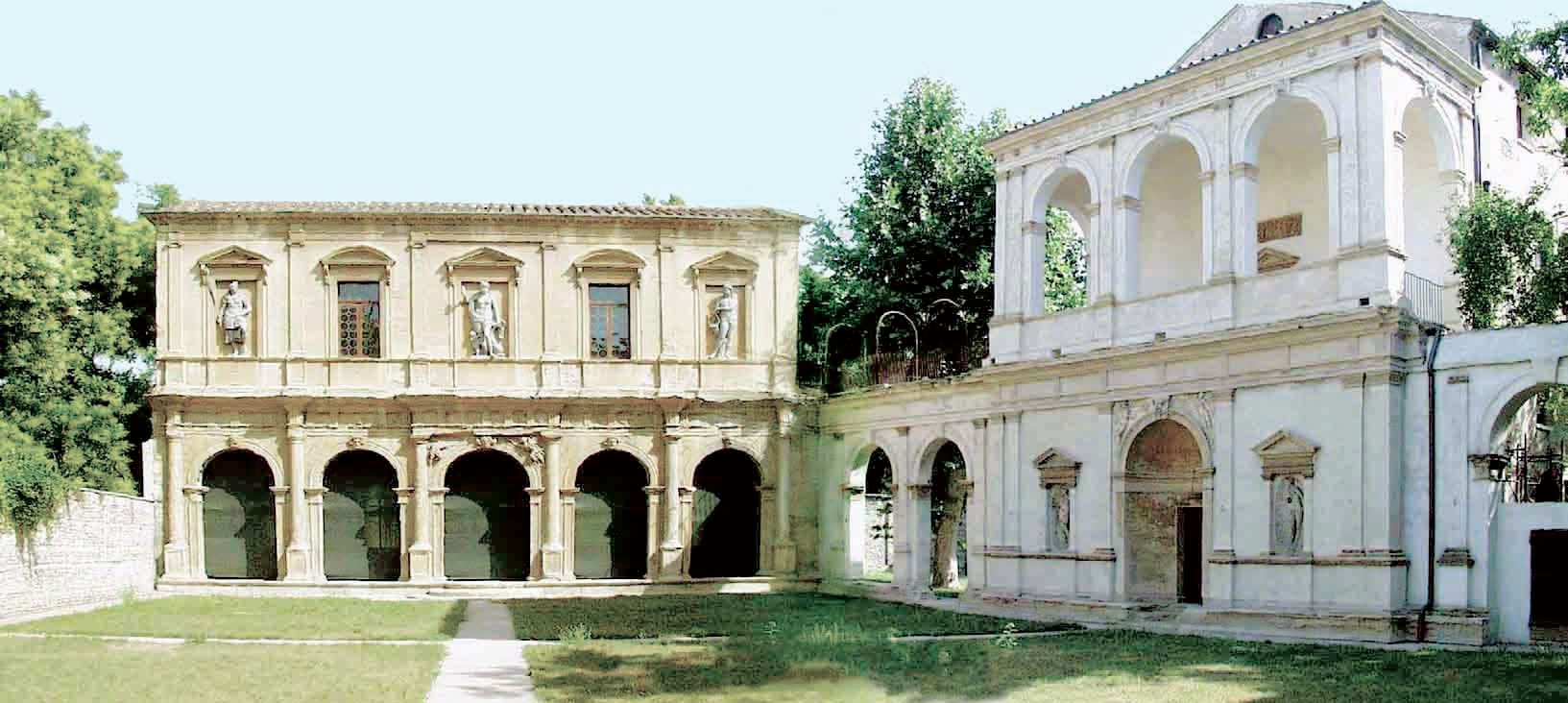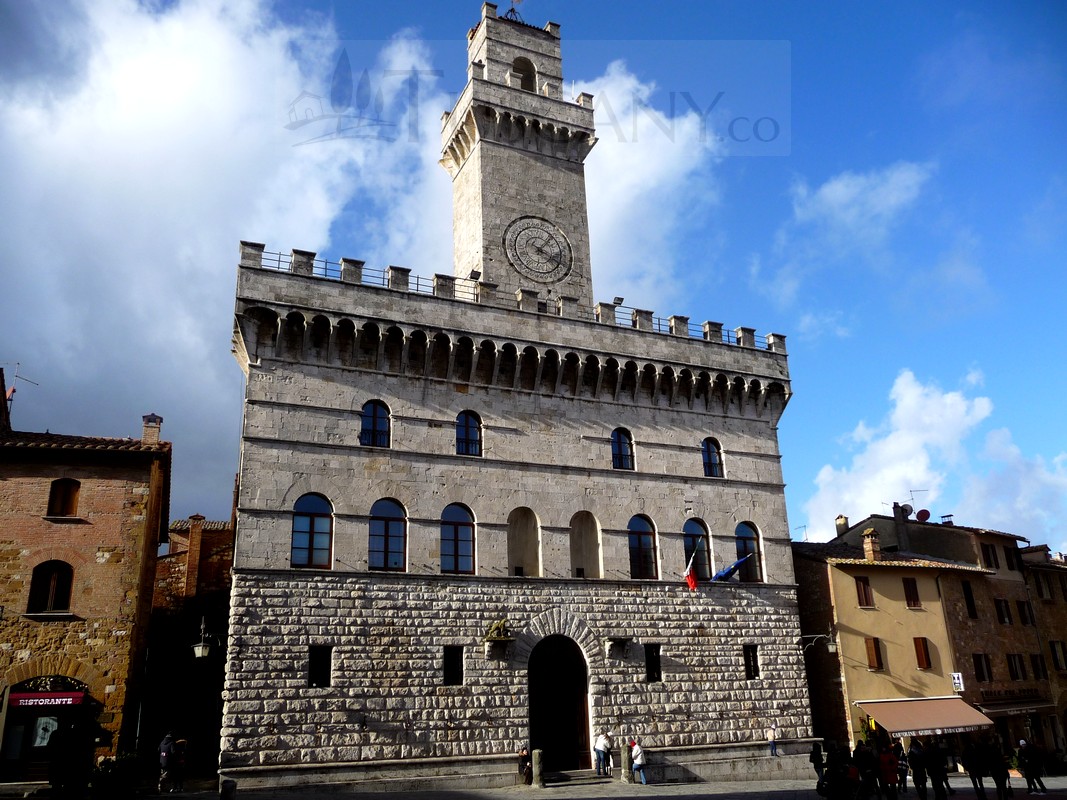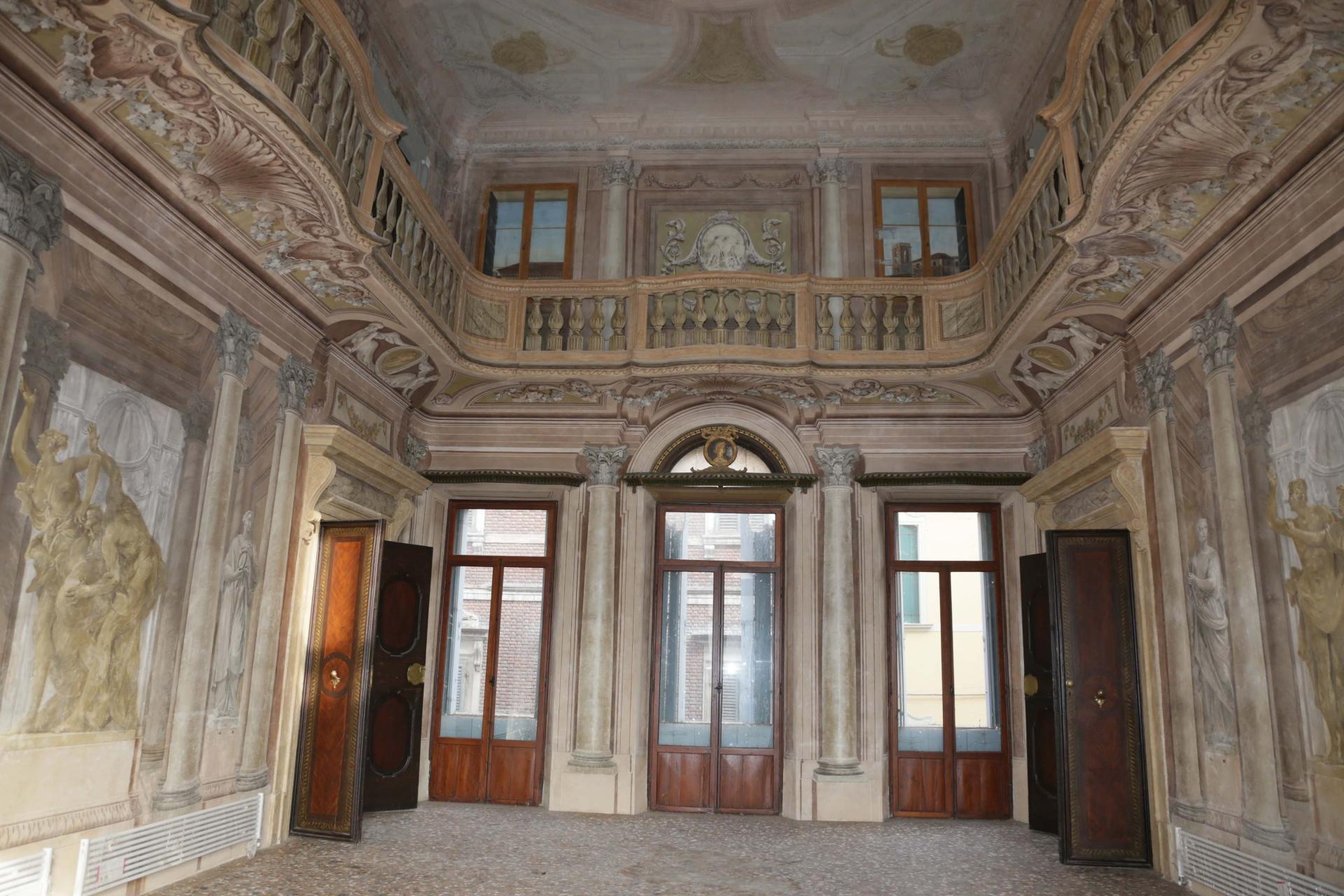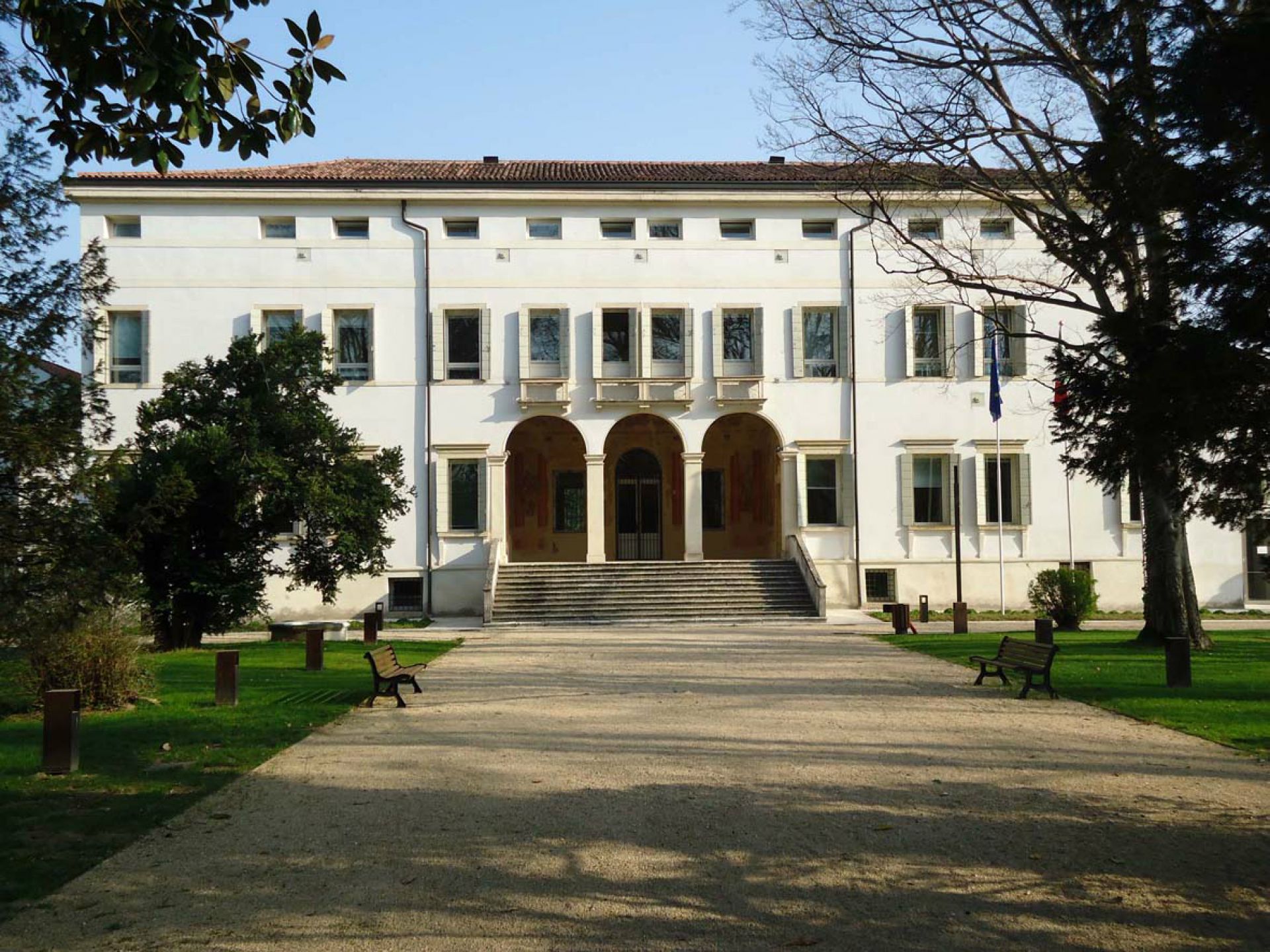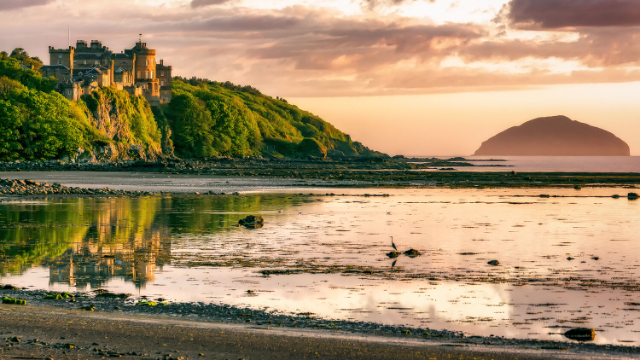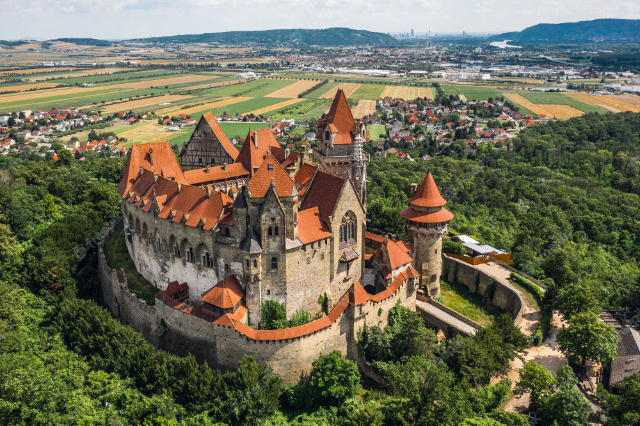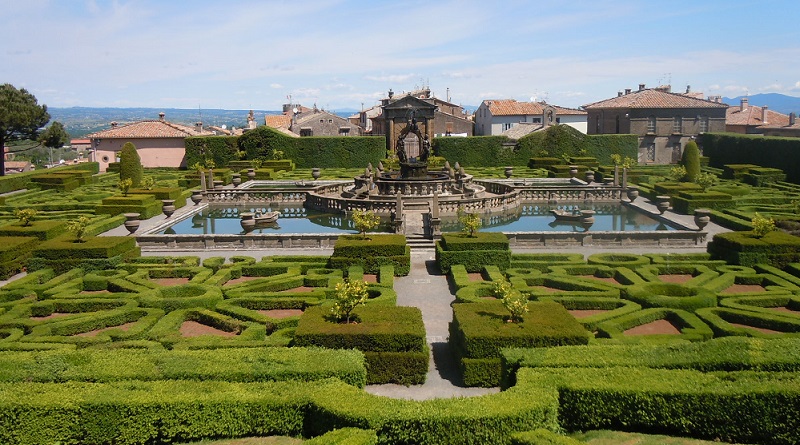Hidden inside a courtyard within an ancient doorway, which is often closed (a pity) we find the Loggia and Odeo Cornaro.
The Loggia and the Odeo, respectively a theatrical scene and a place for music, are the remains of a larger complex of buildings and gardens which were the result of the meeting and fellowship between Alvise Cornaro, a lover of architecture and a scholar of classical antiquity as well as a patron of men of letters and artists, and Giovanni Maria Falconetto, a painter-architect from Verona, with a remarkable archaeological culture consolidated in Rome.
The loggia, built in 1524 according to his design, was conceived as a real fixed scene of an ancient theatre, made of Nanto stone and marked by arches alternating with columns on which runs the architrave with metopes and triglyphs, while above the central arch, a reworking of the Roman triumphal arch, there are winged Victories, a recurring motif in the works of the artist. On the upper floor, within three false windows, are the statues in strong stucco representing Diana, Venus and Apollo made, according to Mannerist canons of elegance and movement, by the sculptor Jacopo Colonna, collaborator of Jacopo Sansovino. The interior of the loggia, decorated in the Roman style with alternating frescoes and stuccoes probably created by Falconetto’s sons, Ottaviano and Provolo, has four figures in relief of young women in the ovals at the corners of the vault, perhaps allegories of the Four Seasons, while in the roundels on the north wall, the gods that give their names to the planets stand out in stucco on a dark background: Diana-Moon, Mars, Saturn and Venus. On the south side only the image of the Sun is preserved, represented by a bearded man sitting on the solar disk, Mercury with a winged caduceus and Jupiter with a bow and arrows.
The Odeo, which probably dates back to 1530 and was a place for music, intellectual leisure as well as the seat of the Accademia degli Infiammati founded in 1540 by Daniele Barbaro, Leone Orsini and Ugolino Martelli, is inspired by the villa of Marco Terenzio Varrone in Cassino, described in a letter to Cicero.
The Cultural Association La Torlonga, in collaboration with the Municipality of Padua, manages the opening and enhancement of the Loggia and Odeo Cornaro.In these places passed the first woman graduate of history, Elena Cornaro Piscopia, acted the Ruzante, Paduan theater composer.
Visits are only guided and at set times with groups limited in number. There is a website to consult and to book.
Themed evenings with tastings are often organised.
